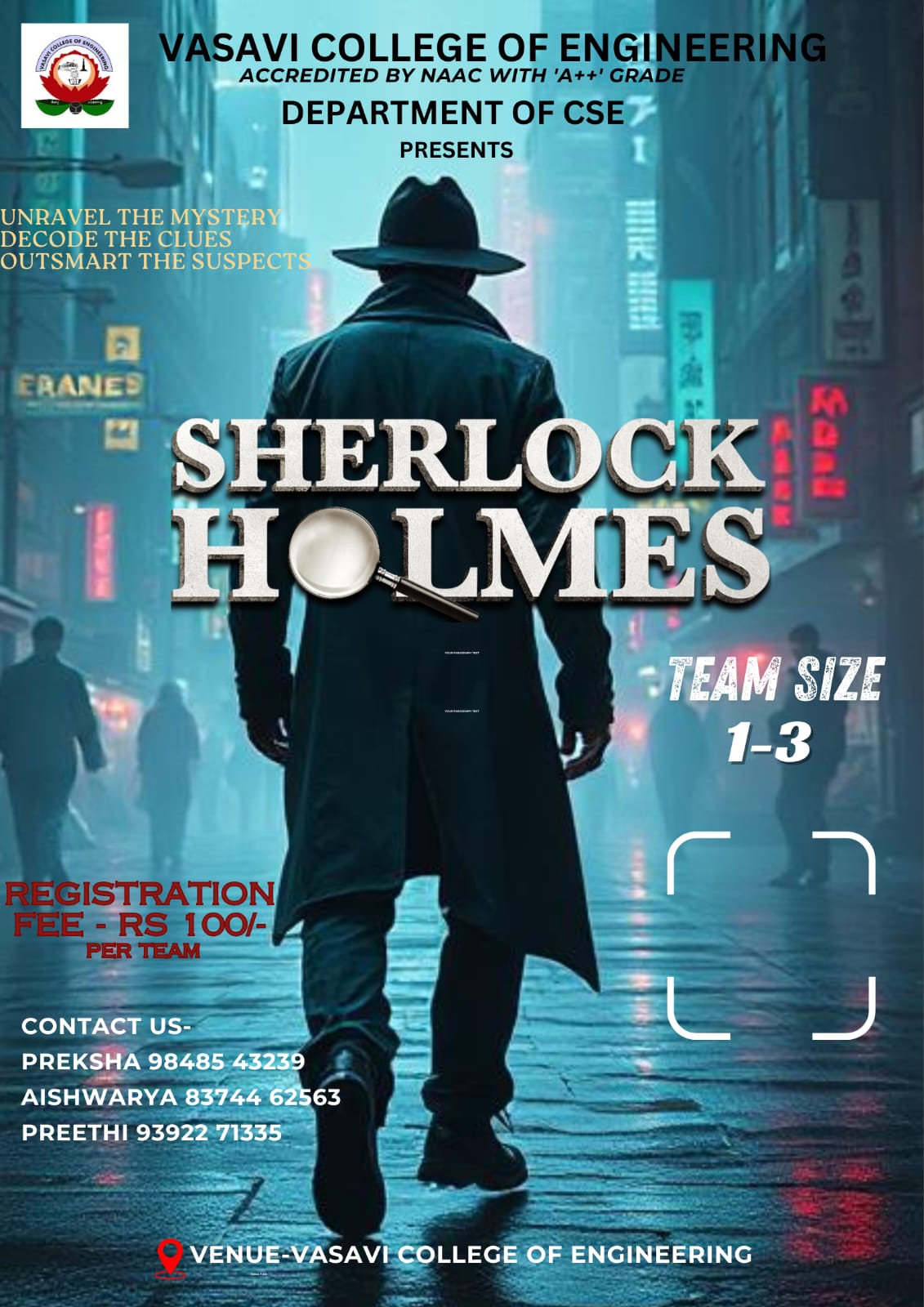About the Event
Sherlock Homies is a cyberpunk detective challenge that tests your analytical thinking, logical reasoning, and digital forensic skills. Teams are presented with a complex cyber mystery involving data breaches, encrypted messages, and digital clues. Your mission is to solve the case by connecting the dots, uncovering hidden evidence, and identifying the culprit before time runs out.
This immersive event combines elements of escape rooms, puzzle-solving, and digital forensics with a futuristic cyberpunk twist. Participants will need to analyze network logs, decrypt messages, follow digital breadcrumbs, and interrogate AI witnesses to piece together what really happened. Can your team match wits with the mysterious cyber-criminal?
